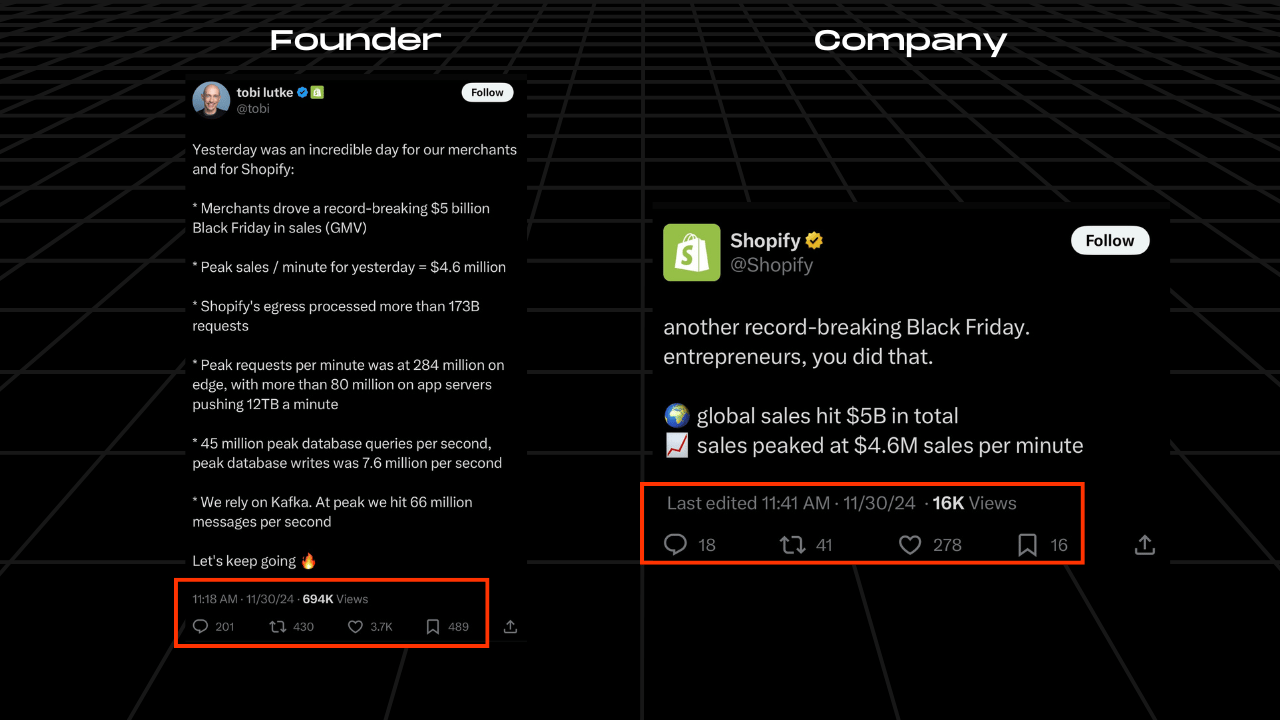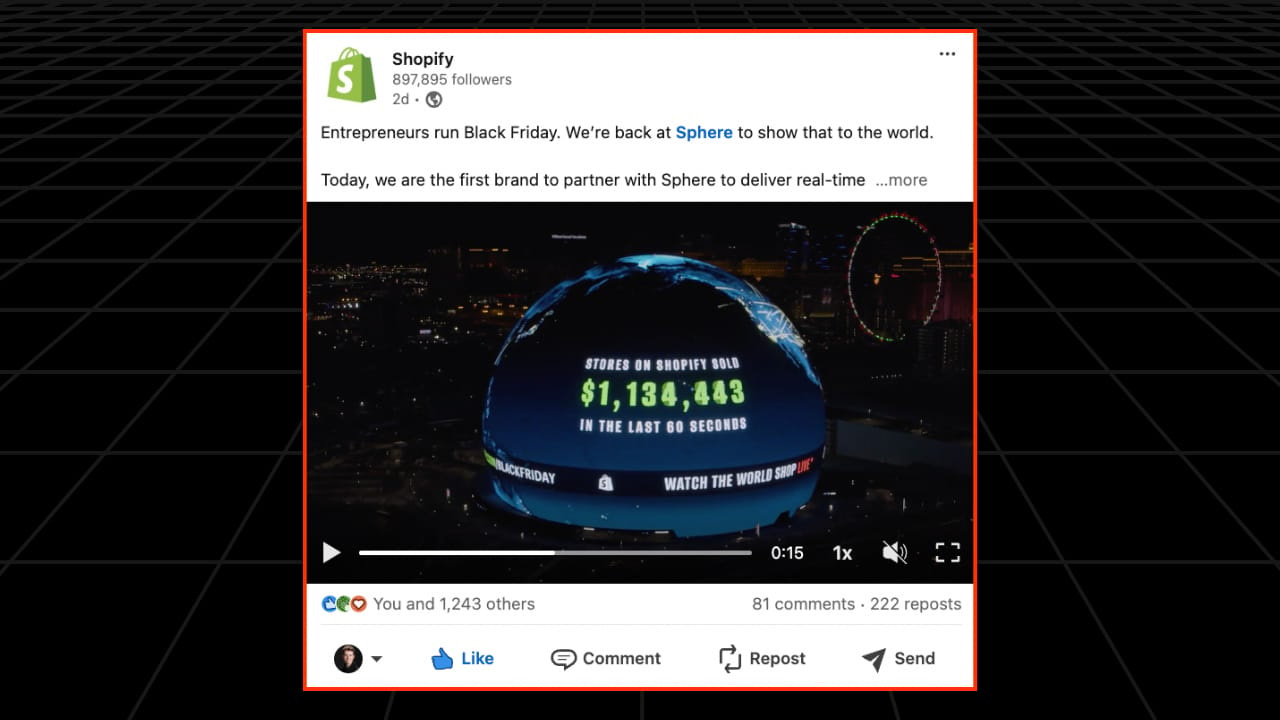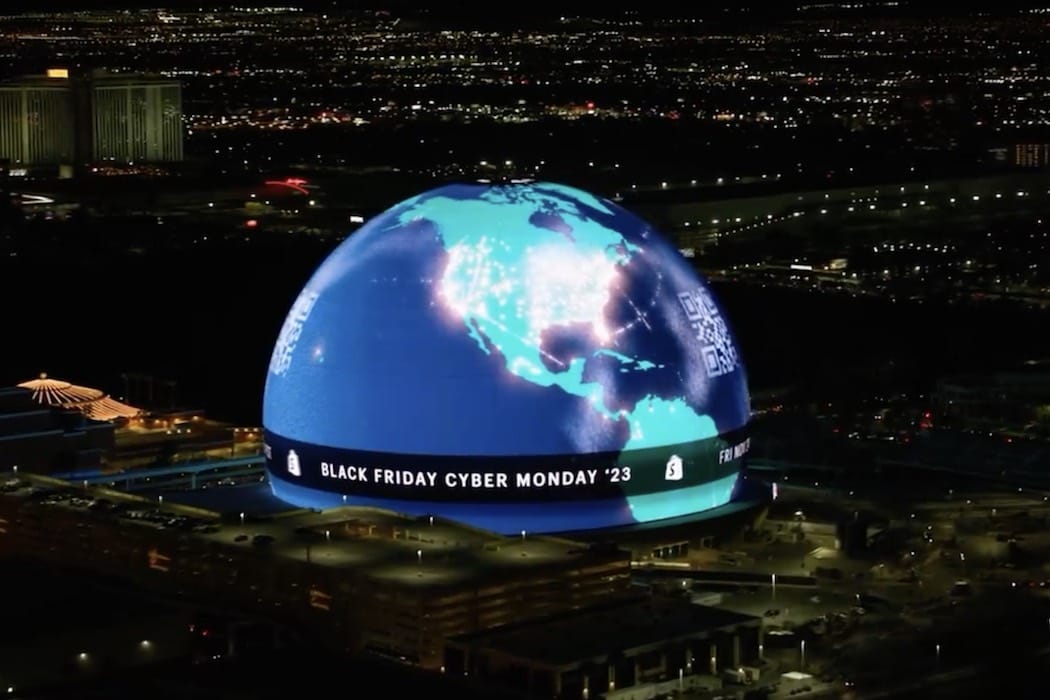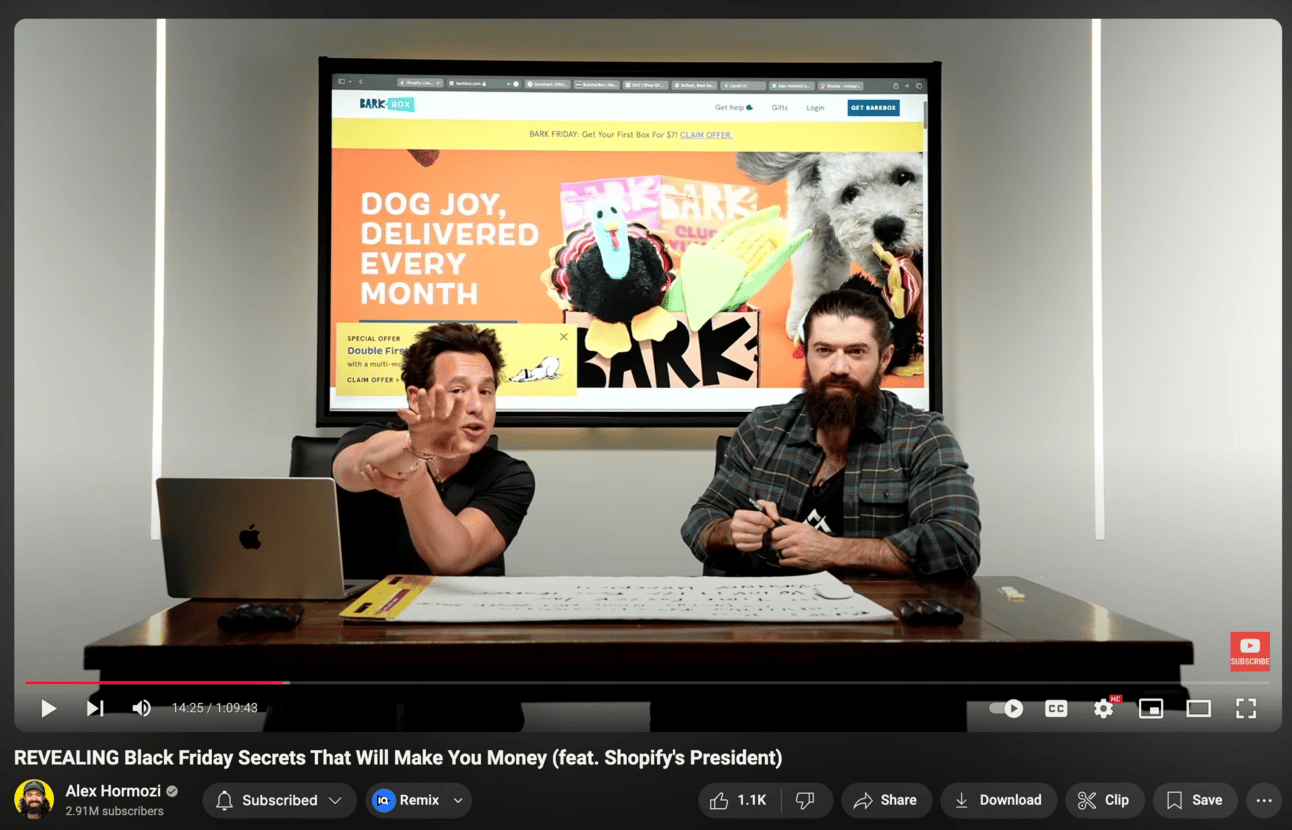Every marketer should study the masterclass Shopify just put on in content marketing.
Last week was Black Friday—perhaps the biggest day of the year for Shopify and most of its merchants. I’m sure you were also bombarded with marketing emails for the better part of last week. Brands texted me more than my own friends.
When you have a mainstream moment like this, it’s irresponsible to let it slip by as a company.
I spent the weekend sifting through the content that went out from Shopify. There are 3 strategies that came away with—that you should bookmark for your next pillar campaign.
Founder-led distribution
Company accounts just aren’t getting the reach they used to. No, they’re not dead. But they sure aren’t as effective on their own as they were in the last decade.
This is why you see so many founders going direct from their accounts. It just works better. A few weeks back I saw another company, Zoominfo, post the same video to both their CEO’s LinkedIn account and the company profile. The video got 19X the engagement on the CEO’s account.
I saw a similar pattern play out in Shopify’s BFCM content campaign. Yes. They posted from the company account (and the content did well!). But Harley Finkelstein, Shopify’s President, and Tobi Lutke, its CEO, were the two figureheads of the content play on social.
The numbers don’t lie.
Check out this example. Shopify hit a record-breaking $5B (billion with a b) in GMV on Black Friday.
Tobi’s post announcing the milestone (and more impressive data points) racked up 694K views, 3.7K likes, 430 reposts, and 201 comments.
Shopify’s brand account also announced the milestone. Its post got 16K views, 278 likes, 4 reposts, and 18 comments.
The brand engagement isn’t even “bad” by company account standards. But do you see the difference in performance when you contrast the brand account versus founder account? Tobi’s post got 43.4X the reach.
The post-by-post comparison only tells part of the story, though. The Shopify execs posted far more frequently to the timelines on both LinkedIn and X.
Harley Finkelstein posted 8 times on LinkedIn during Black Friday and the day leading up to it. The Shopify account posted 3 times.
So, Harley’s content outperformed Shopify’s at the post-level and he was able to post more of it. That’s a lot of extra distribution.
That said, the brand account wasn’t simply an afterthought.
On LinkedIn, the post announcing Shopify’s Las Vegas Sphere activation pulled in 1200+ engagements.
On X, Shopify had a nice mix of platform-native memes, trend reporting, and amplification of the execs personal content.
If I was running a social campaign for a tech company—whether enterprise or early-stage—I’d make the founder the focal point. Then, amplify & support the founder’s content from the company page. See how that works?
[Note: the post frequency data may have changed since this draft was finished. The point still stands—the execs posted more than the brand.]
Post…post…post…and post again.
I’ve worked with over 40 founders in the past year and a half to launch their content presence on LinkedIn. I’ve probably spoken to 100+ about the same topic. They all have the same fear.
What if I post too much?
I kid you not. They’re afraid to post more than 1-2x per week. Afraid.
Of what? Some third-degree professional connection on LinkedIn getting “tired of seeing their content?”
Posting frequency is a lever you have to get in front of your target audience more often.
5x per week is usually what I’d recommend to a founder ramping up content. But those ‘rules’ go out the window when you have a specific launch campaign or marketing moment.
BFCM is one of those moments for Shopify, and they took advantage of it.
By the numbers:
Harley posted 9 times on LinkedIn
Tobi Harley posted 0 times on LinkedIn (not active there)
Harley posted 19 times on X
Tobi posted 12 times on X
[Note: these numbers are not including replies on X]
X is particularly interesting because it’s scrappier. The posts don’t need to be as polished. I mean, this post from Harley that reads “SHOPIFY!!!!!!!!!!!!!!!!!!” pulled 41K views. Probably took 13.7 seconds to type.
[Side note. When a credible executive posts ‘scrappy’ content, they appear more relatable on the timeline. I should probably write a whole other essay on that phenomenon.]
The posts from Harley and Tobi were a combination of sharing data & trends, promoting the Shopify live tracker, amplifying the Sphere activation, and showing love to Shopify merchants.
Frequency is important to highlight because as marketers, we can get too caught up in platform best practices. Only post 1x per day. Don’t include links in the post. Don’t make a CTA that’s too salesy. List goes on.
These rules hold up until they don’t.
On launch day, let it rip.
Behave like a cracked out chronically-online marketer, not a buttoned up ‘corporate’ exec.
Don’t hinder the performance of your biggest campaign of the year because of some LinkedIn guru’s “algorithm hacks” carousel.
IRL → URL.
Shopify first bought ad space on the Las Vegas Sphere on Black Friday in 2023. The creative was their BFCM Live Map.
They ran it back this year. They probably should every year. The ad placement just makes too much sense.
These types of unique OOH placements are viral material for social media. In other words, yes—a lot of folks in Vegas saw the Live Map as they were driving past the Sphere on the way to the casino. But, the real ROI of the Sphere activation is its use as the pillar creative asset in Shopify’s BFCM marketing on social.
The LinkedIn post pulled in 1100+ engagements. The IG post racked up 347K views. The X post only pulled 9.7K views, but it was a simple QRT amplifying the main asset posted by Tobi (which has 277K views).
Marketing lesson: companies that do cool shit IRL unlock more distribution online. I call this the IRL to URL pipeline.
This isn’t quite “IRL” to URL, but Harley’s mainstream media appearances on CNN, ABC, and others sort of function the same way. Yes. He gets in front of the TV audience. But the interview is also great fodder for social clips.
And this is getting super in the weeds, but I’d imagine the performance of those social clips is bolstered by the social proof that comes from it being a TV interview.
See how this all works?
Also. Don’t worry if you can’t secure live TV interviews or buy out ad space on the Las Vegas Sphere. I’m with you. The IRL to URL pipeline also applies to simple activations like exclusive dinners, conferences, lower-cost guerrilla marketing campaigns.
Remember that time Antimetal sent a bunch of branded pizza boxes to VCs in SF and NYC? Yeah. That simple move drove over $1M in revenue. Unify pulled a similar move, sending 300 branded Happy Meal boxes to prospects post-fundraise. That campaign contributed to them booking $6.6M worth of pipe in a single month.
Do cool shit in the real world. Use social to amplify it.
(Bonus) The Hormozi Livestream
Harley Finkelstein went live on YouTube with business influencer & founder of Acquistion.com, Alex Hormozi in the middle of Black Friday.
The stream got in front of Hormozi’s audience of 2.91M subscribers and is currently getting 1.7K views per hour on the channel as of writing this.
During the livestream, Harley and Hormozi went through a bunch of Shopify stores, breaking down tactics that they were using to win during BFCM.
Why is this such a good play?
The Venn diagram of Hormozi subscribers and Shopify target customers is pretty much a circle.
The content is genuinely valuable. But when you look a little deeper, the entire thing is just social proof for Shopify. Every store they pulled up on stream was powered by Shopify—and many of them were doing millions on Black Friday.
When buyers are considering what software to choose, they’re asking themselves:
What’s the ROI of using this product?
Who else (like me) is using this product?
The livestream answers both of those questions in a platform-native format that feels nothing like a sales pitch. Genius.
Just spitballing here, but say I had a massive launch for my own SaaS, Bluecast, coming up. One way I might apply this same strategy on a smaller scale is to go do a webinar or livestream with a popular founder on LinkedIn—say Adam Robinson, for example.
Adam’s got over 100K followers on the platform, and a good chunk of those are other B2B founders who want to post content.
Getting in front of them in a long-form setting is a fast track to trust-building, and would likely drive signups.







